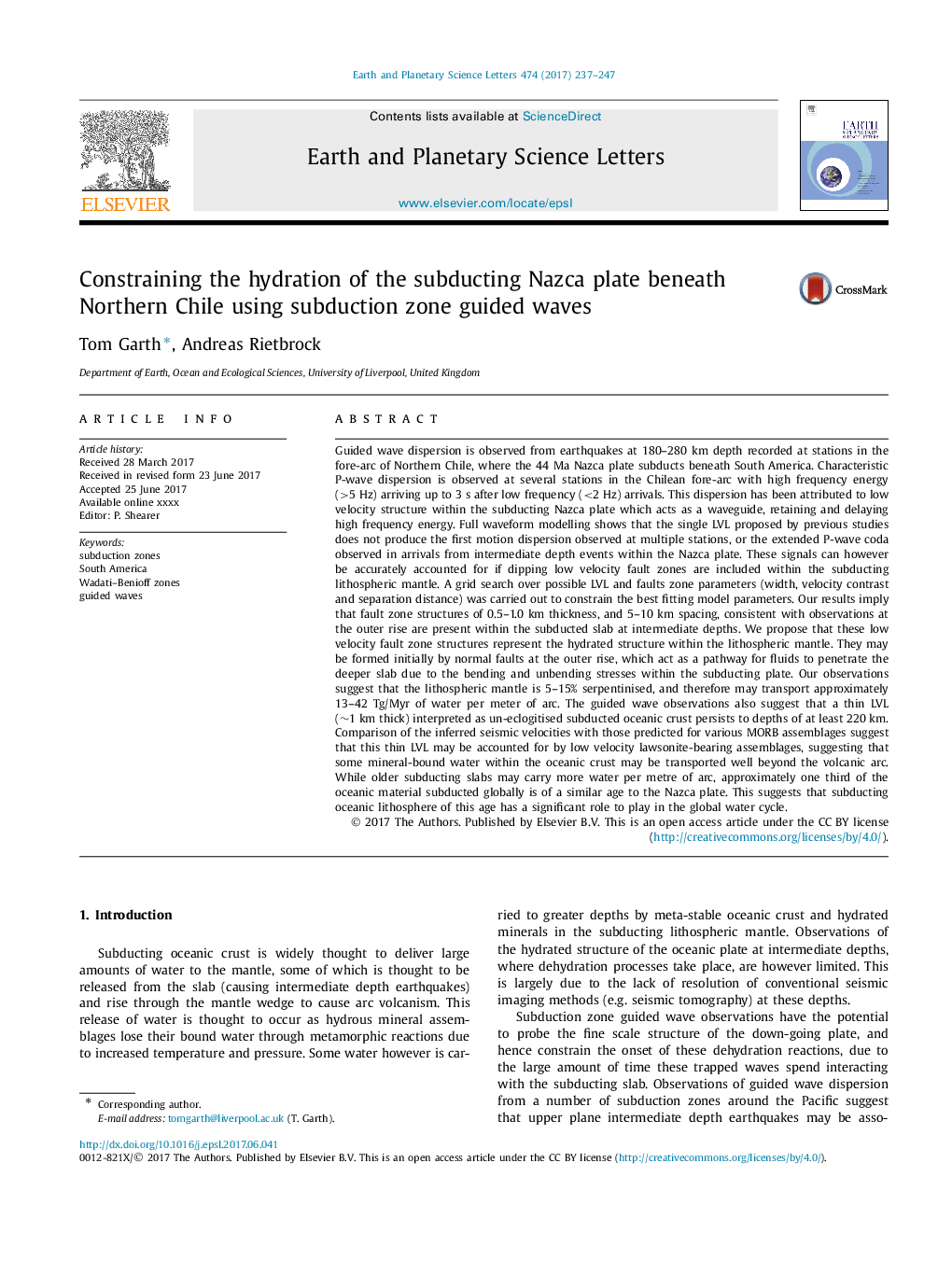| کد مقاله | کد نشریه | سال انتشار | مقاله انگلیسی | نسخه تمام متن |
|---|---|---|---|---|
| 5779737 | 1634682 | 2017 | 11 صفحه PDF | دانلود رایگان |
عنوان انگلیسی مقاله ISI
Constraining the hydration of the subducting Nazca plate beneath Northern Chile using subduction zone guided waves
ترجمه فارسی عنوان
محدود کردن هیدراتاسیون پلاک فرابنفش نازکا در شمال شیلی با استفاده از امواج هدایت شده ناحیه فرابنفش
دانلود مقاله + سفارش ترجمه
دانلود مقاله ISI انگلیسی
رایگان برای ایرانیان
کلمات کلیدی
موضوعات مرتبط
مهندسی و علوم پایه
علوم زمین و سیارات
علوم زمین و سیاره ای (عمومی)
چکیده انگلیسی
Guided wave dispersion is observed from earthquakes at 180-280 km depth recorded at stations in the fore-arc of Northern Chile, where the 44 Ma Nazca plate subducts beneath South America. Characteristic P-wave dispersion is observed at several stations in the Chilean fore-arc with high frequency energy (>5 Hz) arriving up to 3 s after low frequency (<2 Hz) arrivals. This dispersion has been attributed to low velocity structure within the subducting Nazca plate which acts as a waveguide, retaining and delaying high frequency energy. Full waveform modelling shows that the single LVL proposed by previous studies does not produce the first motion dispersion observed at multiple stations, or the extended P-wave coda observed in arrivals from intermediate depth events within the Nazca plate. These signals can however be accurately accounted for if dipping low velocity fault zones are included within the subducting lithospheric mantle. A grid search over possible LVL and faults zone parameters (width, velocity contrast and separation distance) was carried out to constrain the best fitting model parameters. Our results imply that fault zone structures of 0.5-1.0 km thickness, and 5-10 km spacing, consistent with observations at the outer rise are present within the subducted slab at intermediate depths. We propose that these low velocity fault zone structures represent the hydrated structure within the lithospheric mantle. They may be formed initially by normal faults at the outer rise, which act as a pathway for fluids to penetrate the deeper slab due to the bending and unbending stresses within the subducting plate. Our observations suggest that the lithospheric mantle is 5-15% serpentinised, and therefore may transport approximately 13-42 Tg/Myr of water per meter of arc. The guided wave observations also suggest that a thin LVL (â¼1 km thick) interpreted as un-eclogitised subducted oceanic crust persists to depths of at least 220 km. Comparison of the inferred seismic velocities with those predicted for various MORB assemblages suggest that this thin LVL may be accounted for by low velocity lawsonite-bearing assemblages, suggesting that some mineral-bound water within the oceanic crust may be transported well beyond the volcanic arc. While older subducting slabs may carry more water per metre of arc, approximately one third of the oceanic material subducted globally is of a similar age to the Nazca plate. This suggests that subducting oceanic lithosphere of this age has a significant role to play in the global water cycle.
ناشر
Database: Elsevier - ScienceDirect (ساینس دایرکت)
Journal: Earth and Planetary Science Letters - Volume 474, 15 September 2017, Pages 237-247
Journal: Earth and Planetary Science Letters - Volume 474, 15 September 2017, Pages 237-247
نویسندگان
Tom Garth, Andreas Rietbrock,
